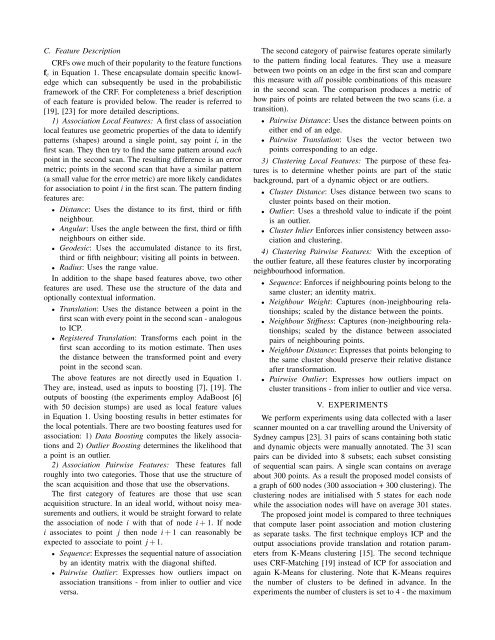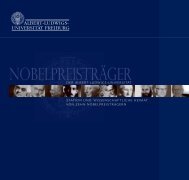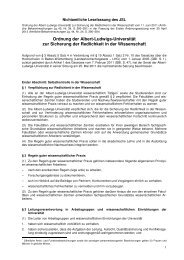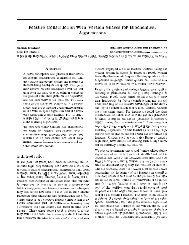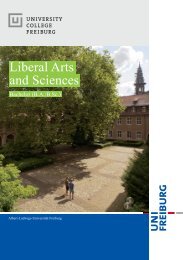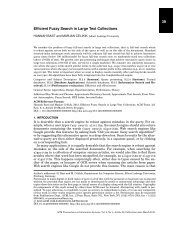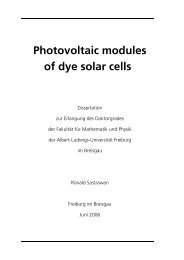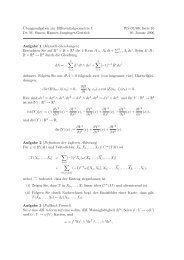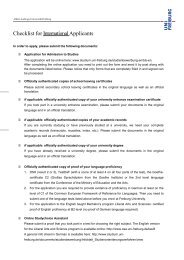An Integrated Probabilistic Model for Scan-Matching, Moving Object ...
An Integrated Probabilistic Model for Scan-Matching, Moving Object ...
An Integrated Probabilistic Model for Scan-Matching, Moving Object ...
Create successful ePaper yourself
Turn your PDF publications into a flip-book with our unique Google optimized e-Paper software.
C. Feature DescriptionCRFs owe much of their popularity to the feature functionsf c in Equation 1. These encapsulate domain specific knowledgewhich can subsequently be used in the probabilisticframework of the CRF. For completeness a brief descriptionof each feature is provided below. The reader is referred to[19], [23] <strong>for</strong> more detailed descriptions.1) Association Local Features: A first class of associationlocal features use geometric properties of the data to identifypatterns (shapes) around a single point, say point i, in thefirst scan. They then try to find the same pattern around eachpoint in the second scan. The resulting difference is an errormetric; points in the second scan that have a similar pattern(a small value <strong>for</strong> the error metric) are more likely candidates<strong>for</strong> association to point i in the first scan. The pattern findingfeatures are:• Distance: Uses the distance to its first, third or fifthneighbour.• <strong>An</strong>gular: Uses the angle between the first, third or fifthneighbours on either side.• Geodesic: Uses the accumulated distance to its first,third or fifth neighbour; visiting all points in between.• Radius: Uses the range value.In addition to the shape based features above, two otherfeatures are used. These use the structure of the data andoptionally contextual in<strong>for</strong>mation.• Translation: Uses the distance between a point in thefirst scan with every point in the second scan - analogousto ICP.• Registered Translation: Trans<strong>for</strong>ms each point in thefirst scan according to its motion estimate. Then usesthe distance between the trans<strong>for</strong>med point and everypoint in the second scan.The above features are not directly used in Equation 1.They are, instead, used as inputs to boosting [7], [19]. Theoutputs of boosting (the experiments employ AdaBoost [6]with 50 decision stumps) are used as local feature valuesin Equation 1. Using boosting results in better estimates <strong>for</strong>the local potentials. There are two boosting features used <strong>for</strong>association: 1) Data Boosting computes the likely associationsand 2) Outlier Boosting determines the likelihood thata point is an outlier.2) Association Pairwise Features: These features fallroughly into two categories. Those that use the structure ofthe scan acquisition and those that use the observations.The first category of features are those that use scanacquisition structure. In an ideal world, without noisy measurementsand outliers, it would be straight <strong>for</strong>ward to relatethe association of node i with that of node i + 1. If nodei associates to point j then node i + 1 can reasonably beexpected to associate to point j+ 1.• Sequence: Expresses the sequential nature of associationby an identity matrix with the diagonal shifted.• Pairwise Outlier: Expresses how outliers impact onassociation transitions - from inlier to outlier and viceversa.The second category of pairwise features operate similarlyto the pattern finding local features. They use a measurebetween two points on an edge in the first scan and comparethis measure with all possible combinations of this measurein the second scan. The comparison produces a metric ofhow pairs of points are related between the two scans (i.e. atransition).• Pairwise Distance: Uses the distance between points oneither end of an edge.• Pairwise Translation: Uses the vector between twopoints corresponding to an edge.3) Clustering Local Features: The purpose of these featuresis to determine whether points are part of the staticbackground, part of a dynamic object or are outliers.• Cluster Distance: Uses distance between two scans tocluster points based on their motion.• Outlier: Uses a threshold value to indicate if the pointis an outlier.• Cluster Inlier En<strong>for</strong>ces inlier consistency between associationand clustering.4) Clustering Pairwise Features: With the exception ofthe outlier feature, all these features cluster by incorporatingneighbourhood in<strong>for</strong>mation.• Sequence: En<strong>for</strong>ces if neighbouring points belong to thesame cluster; an identity matrix.• Neighbour Weight: Captures (non-)neighbouring relationships;scaled by the distance between the points.• Neighbour Stiffness: Captures (non-)neighbouring relationships;scaled by the distance between associatedpairs of neighbouring points.• Neighbour Distance: Expresses that points belonging tothe same cluster should preserve their relative distanceafter trans<strong>for</strong>mation.• Pairwise Outlier: Expresses how outliers impact oncluster transitions - from inlier to outlier and vice versa.V. EXPERIMENTSWe per<strong>for</strong>m experiments using data collected with a laserscanner mounted on a car travelling around the University ofSydney campus [23]. 31 pairs of scans containing both staticand dynamic objects were manually annotated. The 31 scanpairs can be divided into 8 subsets; each subset consistingof sequential scan pairs. A single scan contains on averageabout 300 points. As a result the proposed model consists ofa graph of 600 nodes (300 association + 300 clustering). Theclustering nodes are initialised with 5 states <strong>for</strong> each nodewhile the association nodes will have on average 301 states.The proposed joint model is compared to three techniquesthat compute laser point association and motion clusteringas separate tasks. The first technique employs ICP and theoutput associations provide translation and rotation parametersfrom K-Means clustering [15]. The second techniqueuses CRF-<strong>Matching</strong> [19] instead of ICP <strong>for</strong> association andagain K-Means <strong>for</strong> clustering. Note that K-Means requiresthe number of clusters to be defined in advance. In theexperiments the number of clusters is set to 4 - the maximum


